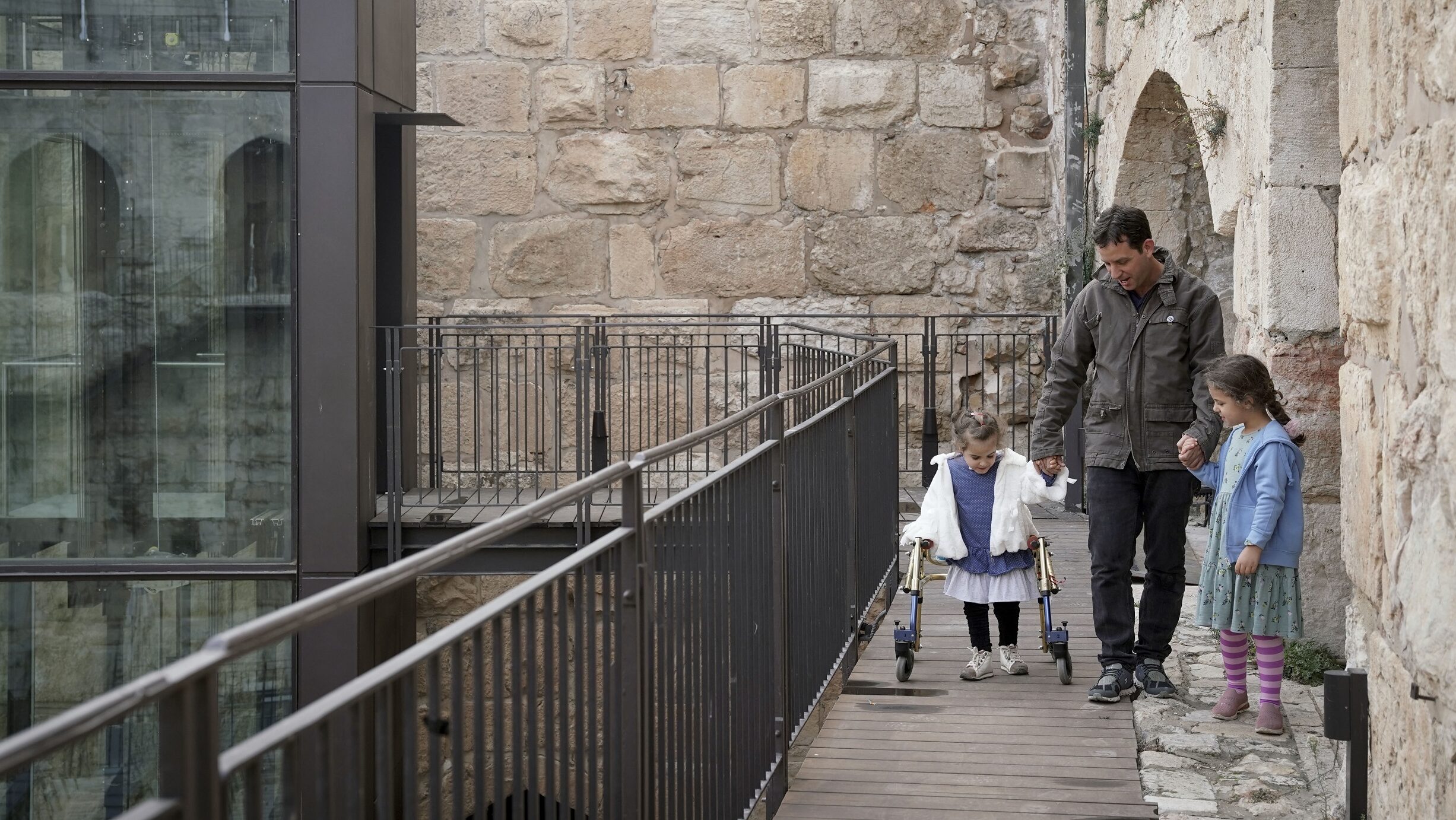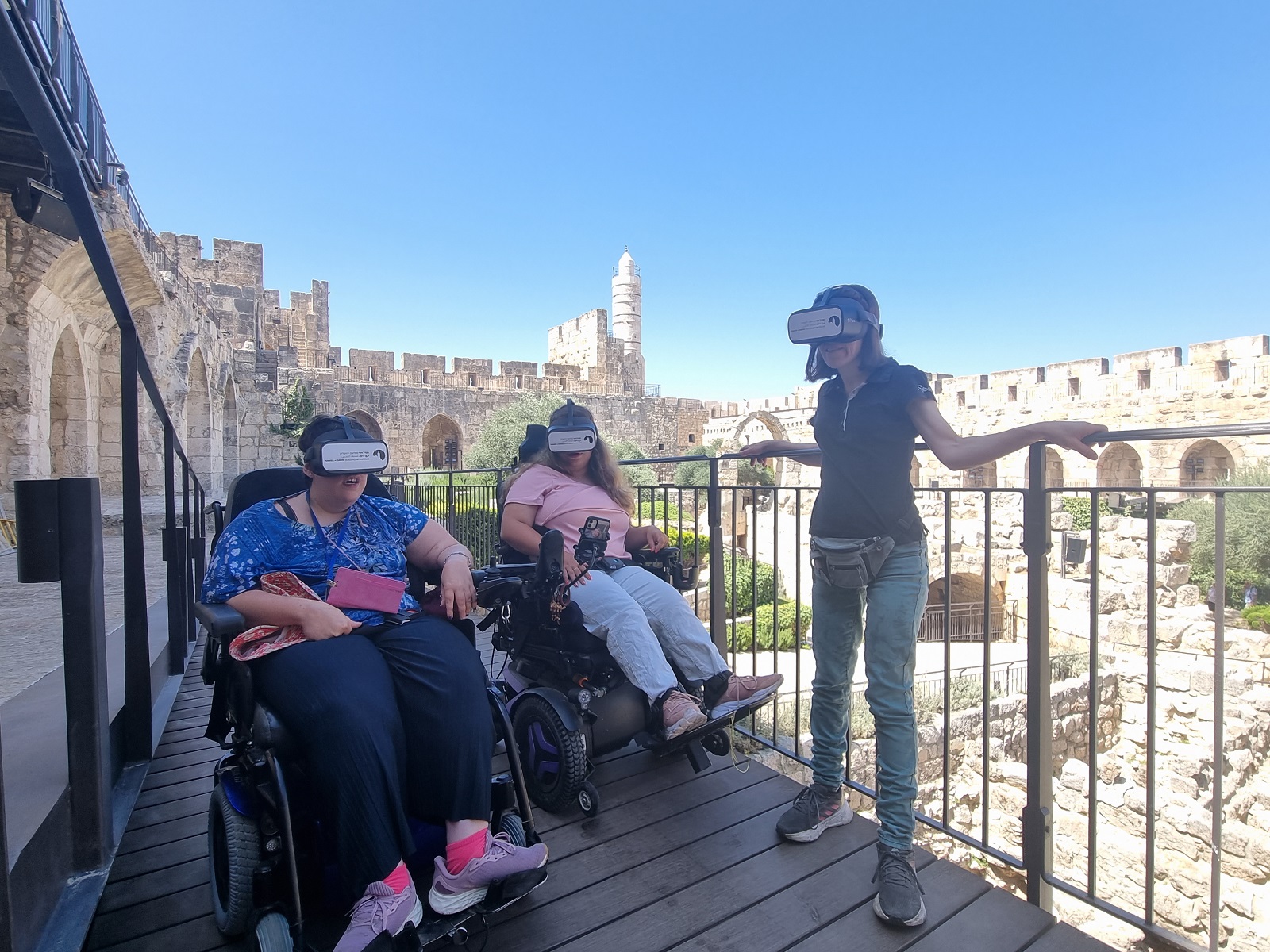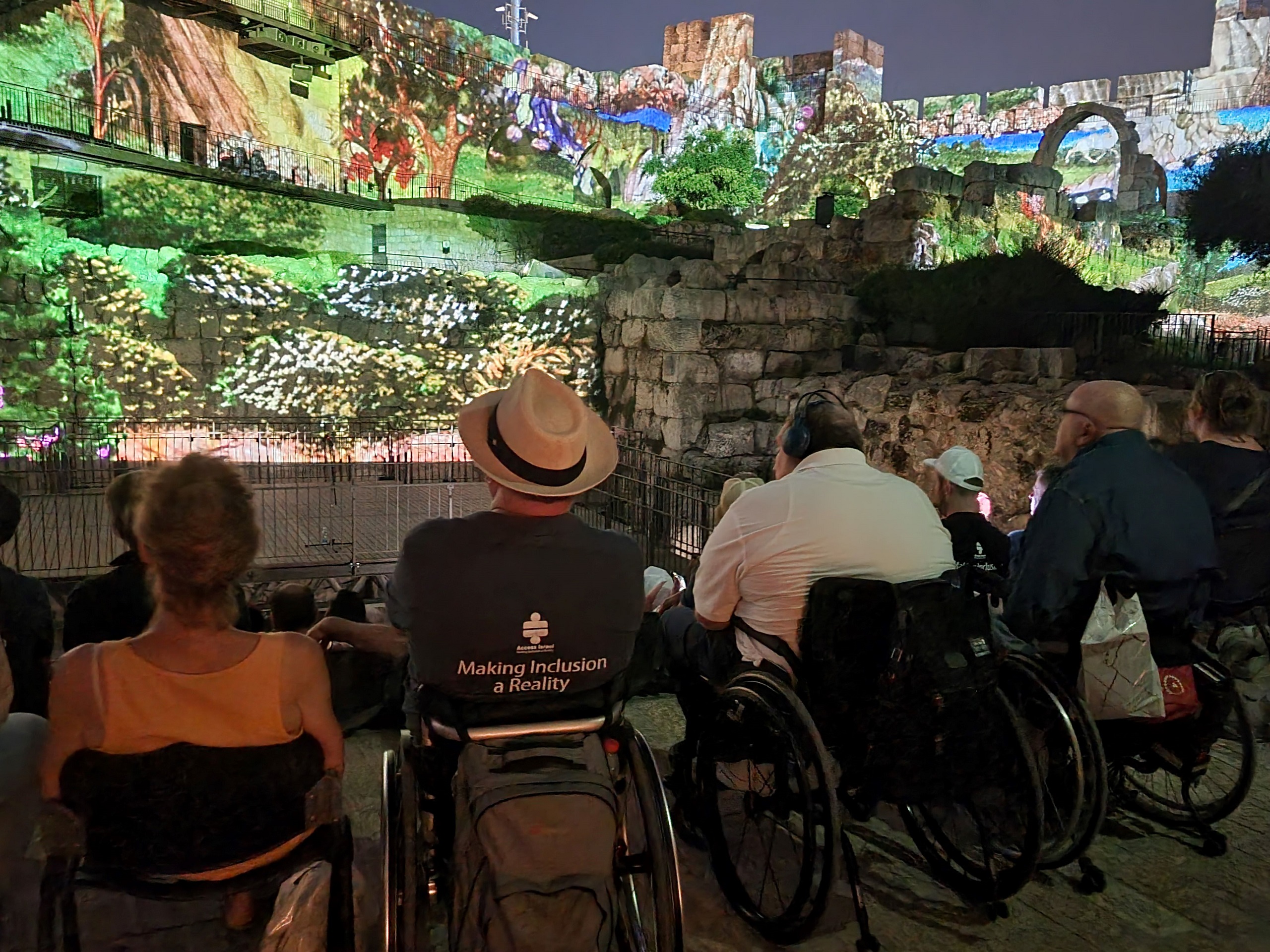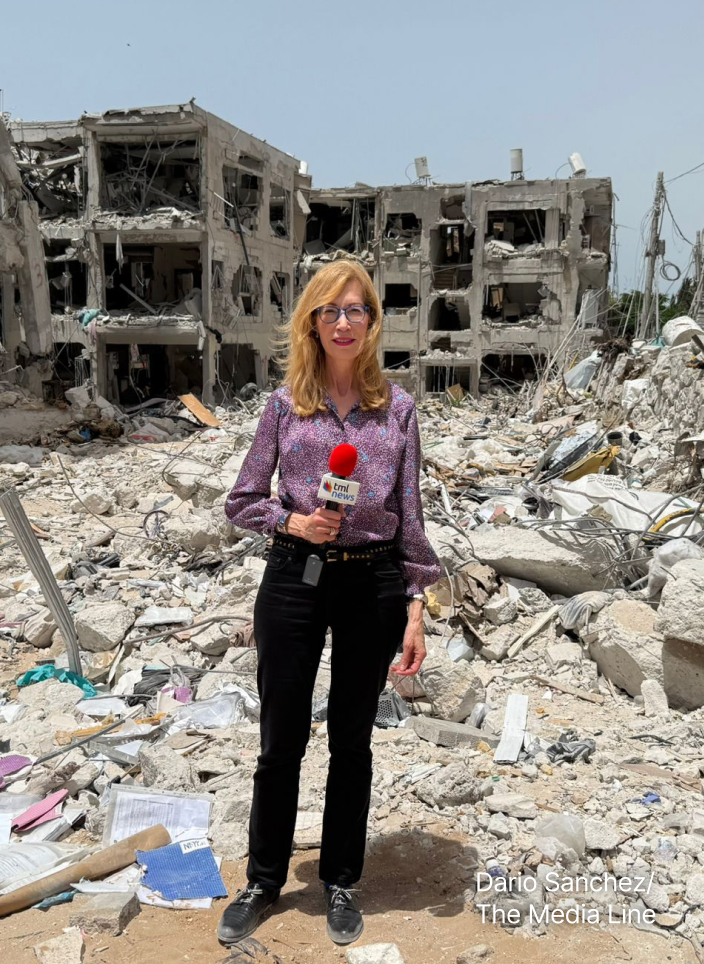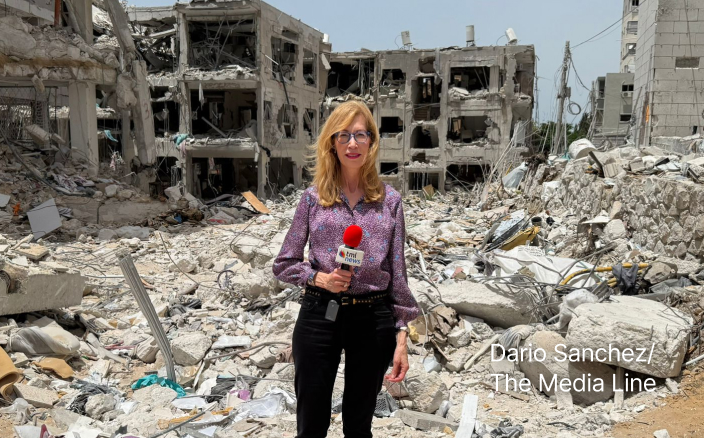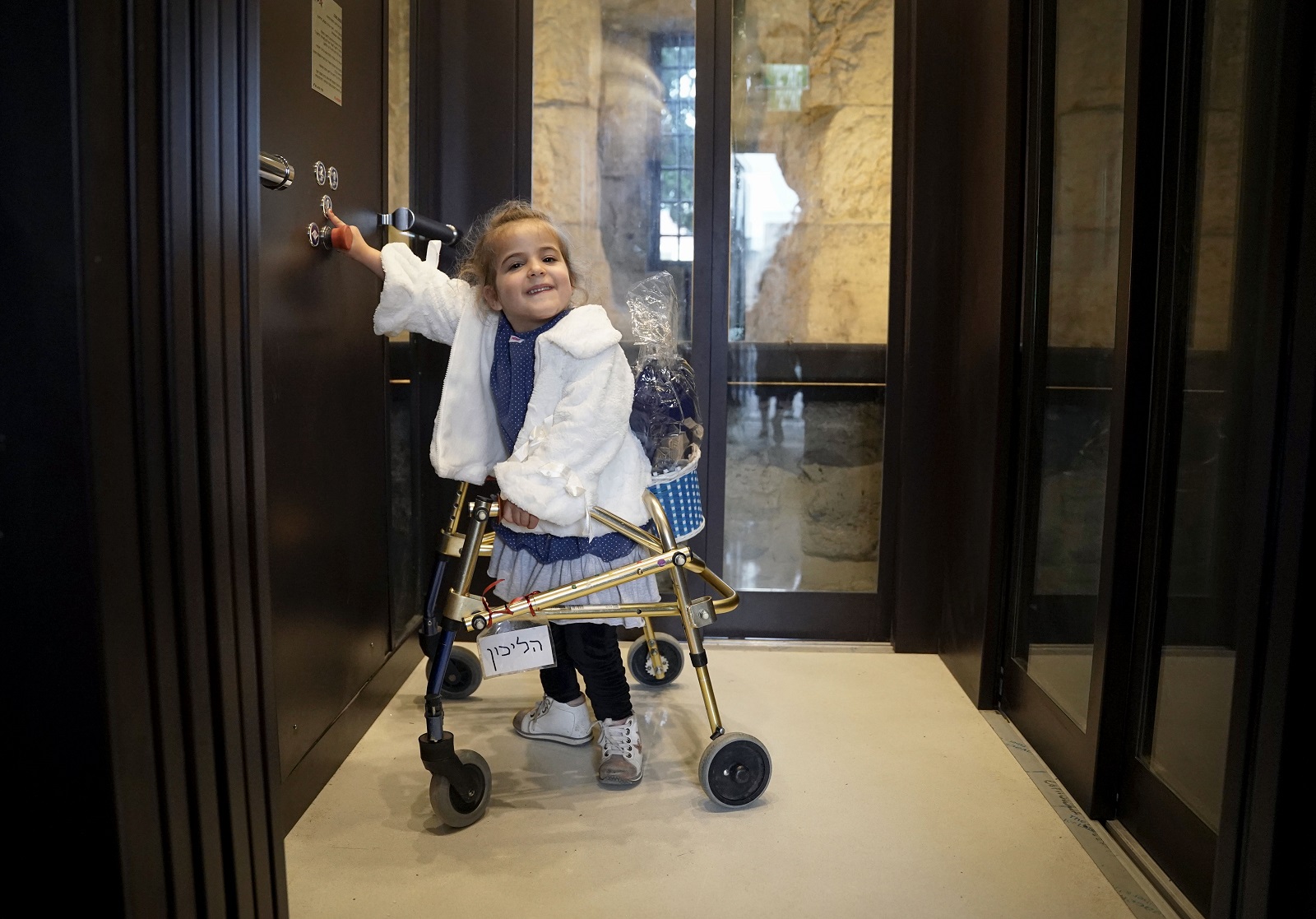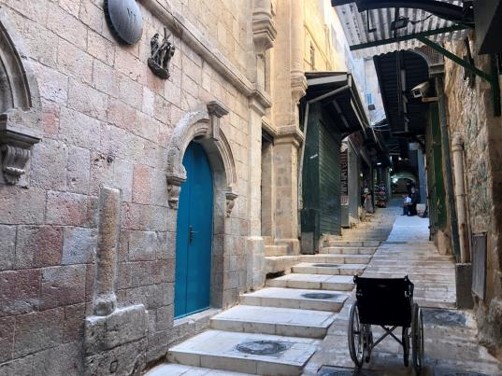Disabled People Finally Get Their Way in the Old City
From elevators and handrails to VR, beacons, and sign language guides—how Jerusalem's Old City and Tower of David set a new standard for accessibility despite archaeological challenges
The Tower of David Jerusalem Museum, located in the historic citadel at the entrance to Jerusalem’s Old City, has completed a decadelong, $50 million renovation to improve accessibility and inclusivity. Supported by Dame Vivien Duffield through the Clore Israel Foundation, the project sets a benchmark for integrating accessibility into one of the world’s oldest and most culturally significant heritage sites. The museum is now almost entirely accessible, except for the rooftop view.
Reut Kozak, head of access and inclusion at the Tower of David Jerusalem Museum, spoke about her dedication to merging archaeology with accessibility. “We started small in 2016 with family activities. People doubted whether an archaeological site could accommodate those with special needs, but we said, ‘No such thing. We’re going to open the museum.’”
Physical accessibility initiatives soon expanded as interest grew. “This citadel contains ruins from the First Temple, Second Temple, Byzantine, Roman, Muslim, and Crusader periods. We realized it needed to be accessible to everyone, not just people with special needs.”
Among the key upgrades, Kozak noted the installation of two elevators. “We installed two elevators—one to the mid-level exhibits on the sanctity of Judaism and Christianity and another to the upper level, making it accessible for the first time. Now, wheelchair users, elderly visitors, pregnant women, and children can easily access these areas.”
Challenges like making the observation point accessible led to creative solutions. “We couldn’t make it physically accessible, so we created a VR app. Visitors can scan a QR code or use VR glasses to explore panoramas of the Old and New City. The viewpoint is also available on our website, enabling anyone, anywhere, to experience it.”
Inclusivity remains central to these efforts. “It’s not just for people with special needs—it’s for anyone unable to visit in person. It provides an immersive experience with views available in three languages, both day and night, along with interactive learning features.”
Jerusalem’s iconic Tower of David dates back thousands of years. Archaeological excavations have uncovered remnants of walls from the First Temple period and the era of Judean kings. Throughout its history, the citadel has been a seat of power and a sentinel watching over the city.
Since its establishment as a museum in 1989, the Tower of David has celebrated Jerusalem’s significance in Judaism, Christianity, and Islam. This dedication to inclusivity has extended beyond its walls. On December 4-5, 2024, the museum will host the virtual Global Conference on Accessibility in Historic Sites and Cities, inviting experts, policymakers, and stakeholders to share strategies, explore solutions, and encourage collaboration for improving accessibility at heritage sites.
Eilat Lieber, director and chief curator of the Tower of David Museum, discussed the museum’s vision and challenges during its accessibility transformation. “Our main goal was to improve access to the museum and exhibitions. We worked hard to find solutions because we wanted to open this beautiful heritage site to everyone.”
Adapting the ancient citadel came with unique challenges. “It’s an ancient fortress with all the beauty and rich history of the past, but it was never meant to be a museum,” Lieber noted. “To bring the museum into the 21st century and update the exhibitions, we had to integrate technology—not just to enhance the experience but as part of our accessibility solutions. Seeing groups of people with disabilities enjoying the exhibitions, tours, and activities has been incredibly rewarding.”
The more you know, the less you hate. Knowledge is power. … We belong here; they belong here. We can only build the future if we lay it on the foundation of our rich, shared history.
Knowledge and shared history are essential for fostering understanding, Lieber emphasized. “The more you know, the less you hate. Knowledge is power. Bringing people here to see shared histories and discuss archaeology is essential. We belong here; they belong here. We can only build the future if we lay it on the foundation of our rich, shared history.”
Give the gift of hope
We practice what we preach:
accurate, fearless journalism. But we can't do it alone.
- On the ground in Gaza, Syria, Israel, Egypt, Pakistan, and more
- Our program trained more than 100 journalists
- Calling out fake news and reporting real facts
- On the ground in Gaza, Syria, Israel, Egypt, Pakistan, and more
- Our program trained more than 100 journalists
- Calling out fake news and reporting real facts
Join us.
Support The Media Line. Save democracy.
Museum accessibility for the deaf community has also been a focus of innovation. Shirly Pinto Kadosh, a former Knesset member and disability rights advocate, shared her experiences. “I love history and art, but museums often feel closed off to the deaf—not because we can’t understand, but because they don’t provide the tools we need. Many times, deaf people are let in for free, as if to say, ‘There’s nothing here for you anyway.’ It’s incredibly disappointing.”
Israel’s first sign language guide for the deaf was developed at the Tower of David Museum. “Many historical terms lacked signs in Israeli or international sign language. For example, ‘Hasmoneans’ had no sign. We collaborated with the Israeli Academy of Language and deaf professionals to create new terms, working with a group of 15–20 people. For terms like ‘imam,’ we sought input from Arab communities worldwide to ensure cultural accuracy. Despite the challenges of working during a conflict, the academy connected with people in Turkey, Lebanon, Germany, and beyond to create respectful, accurate signs,” she said.
Accessibility isn’t just about tools—it’s about inclusion
Efforts like these reflect broader goals, Pinto Kadosh said. “Accessibility isn’t just about tools—it’s about inclusion. At the Tower of David, we’ve shown how technology and collaboration can break down barriers and create a space where everyone feels part of something larger.”
The Old City of Jerusalem has also seen significant investment in accessibility in recent years.
“In a city like Jerusalem, where every stone tells a story and every step reveals history, creating accessibility was not simple,” said Gura Berger, spokesperson for PAMI, the organization spearheading the project to make the Old City accessible. “The Old City spans just one square kilometer but is home to 40,000 residents, 12% of whom require some form of accessibility. That’s around 5,000 people—and this project began with their needs in mind.”
“We took charge of the project of making the Old City accessible in 2016. When you come into a city like this, it has a patina, a flavor, smells, and the way you walk in Jerusalem. The steps we know—the thousands of steps—were originally built for camels, so they’re very large. The difference in elevation between the New Gate and the Dung Gate is about 68 meters, which is significant within just one square kilometer,” she explained.
Berger emphasized the initiative’s community-focused origins: “The project was originally meant for residents, for children to walk to kindergarten or school, or for people to simply leave their homes to enjoy the sun in a garden. But what started as a residential project became a top-leading tourist project for accessibility in historic cities.”
We checked about 50 historic cities worldwide, and Jerusalem is the only one with such a holistic project
“Jerusalem is definitely a pioneer,” she added. “We checked about 50 historic cities worldwide, and Jerusalem is the only one with such a holistic project.”
Dr. Amit Re’em, the Jerusalem regional archaeologist for the Israel Antiquities Authority, discussed the evolving approach to accessibility in the Old City and the challenges of balancing modern needs with preserving ancient heritage. “Accessibility is a big word. The minute you say accessibility, everybody thinks about disabled people—and that’s right—but for me, it’s a bigger issue. Accessibility is also about how we approach archaeological sites and make them a meaningful part of the community.”
Dr. Re’em offered a compelling example of this evolution at the Tower of David Museum.
“Historically, the idea of altering a medieval vaulted roof to install an elevator would have been unthinkable. When the museum proposed it, we initially said, ‘No way. You can’t do it—you’re damaging the archaeology.’ But after six years of discussion, we understood the importance of accessibility. The elevator now makes the eastern side of the citadel accessible, allowing many more people to learn about the archaeology of the citadel and the Old City of Jerusalem. We realized the balance was worth it.”
The Old City’s steep inclines and preservation requirements posed unique challenges. “We added handrails along steep pathways to help people either go up or down safely. We’ve also installed accessible toilets because no accessibility project is complete without addressing basic needs. However, every change had to comply with regulations from the Israel Antiquities Authority. You can’t move a stone in the Old City without permission, and if you do, you must return it exactly as it was,” Berger said.
Berger also discussed solutions to specific challenges, such as the steepest section of the Via Dolorosa: “We created wave-shaped stairs to slow the descent and prevent wheelchairs from slipping. This approach balances accessibility with the historical and spiritual essence of the city.”
“This is a team effort,” she concluded. “Seven governmental bodies, including the Jerusalem Development Authority, the Ministry of Jerusalem Affairs, and the Israel Antiquities Authority, worked together to bring this vision to life. Our goal was clear: to make accessible whatever can be accessible. Jerusalem now stands as a global leader in making historic sites inclusive for all.”
Technology has also played a vital role. Ohad Berman, CEO of Mehalev, described how the Step-Hear system has transformed the experience for visually impaired visitors. “It’s an Israeli technology that helps visually impaired or blind individuals navigate public areas like parks, museums, and banks. Using an app and beacons, it guides users by providing exact information about their location, surroundings, and how to move independently.”
At the Tower of David Museum, Step-Hear provides critical assistance. “For example, it guides visitors through the museum, explaining their location, the history, and what’s on each floor. Even simple tasks, like finding a restroom, become easier. It’s about enabling independence.”
The Old City posed unique challenges for implementation. “In most places, we use tactile platforms, but in the Old City, altering historic floors is not an option. Instead, we installed beacons and uploaded detailed information into the system, tailored with input from visually impaired focus groups.”
The system’s accessibility extends even further. “Available in four languages—Hebrew, English, Russian, and Arabic—it provides guidance for navigating uphill paths, locating landmarks, and more. It first launched in the Old City in 2022 and expanded to the museum in 2024.”
Artificial intelligence (AI) enhances the system’s functionality. “AI monitors usage patterns and optimizes our development process. For public transportation, the system guides users to bus stops, informs them of schedules, alerts drivers, and helps passengers navigate to their destinations independently,” Berman noted.
“Our goal is to enable everyone to navigate historic sites like the Old City and Tower of David with the same freedom as anyone else,” he concluded. “It’s about creating systems that allow full engagement with these incredible places.”
